No products in the cart.
Great news! The Canada Post strike is over! We’re resuming deliveries to Canada!
Excellente nouvelle ! La grève de Postes Canada est terminée ! Nous reprenons les livraisons vers le Canada !
Great news! The Canada Post strike is over! We’re resuming deliveries to Canada!
Excellente nouvelle ! La grève de Postes Canada est terminée ! Nous reprenons les livraisons vers le Canada !

Galazolin nasal drops solution 0.1% dropper bottle 10 ml with first opening control
$14.09
Free Worldwide Shipping
Estimated delivery:
14 - 21 days
Categories: Cold and flu
Brand: Polfa
Galazolin is a whole line of drugs that help with nasal congestion. Another active drug is xylometazoline, which has a sympathomimetic effect on the mucous membrane of the nasal passages. Anti-nasal power Galazolin is used to relieve nasal congestion, relieve rhinitis and nasal congestion.
Pharmacological properties
Pharmacodynamics. Xylometazoline is an imidazoline derivative, has a sympathomimetic effect, is a direct antagonist of α2-adrenoreceptors. causes narrowing of the blood vessels of the nasal mucosa, eliminates its hyperemia and edema, and reduces exudation.
Long-term use of the drug (2 weeks) may lead to secondary vasodilation (drug rhinitis), which may be caused by inhibition of the release of noradrenaline from nerve endings by excitation of presynaptic α2 – adrenoreceptors.
Pharmacokinetics. The action of the drug develops after 5-10 minutes; its effect lasts for 5-6 hours, but vasoconstriction persists for another 8-12 hours. When applied to the mucous membrane, the drug causes local vasoconstriction and is practically not absorbed into the bloodstream and does not have a systemic effect. In the event of a significant amount of xylometazoline entering the digestive tract (mainly possible in children), excessive sedative effect is noted.
Indication
Treatment of acute rhinitis of viral or bacterial origin; acute or exacerbation of chronic sinusitis; allergic rhinitis; acute otitis media (to restore patency of the auditory tubes).
Application
Nasal drops 0.05% (1 drop contains 0.025 mg of xylometazoline hydrochloride).
Children aged 4 months to 2 years, as prescribed by a doctor, are instilled with 1 drop of 0.05% solution into each nostril every 8-12 hours, but not more than 3 times a day; children aged 2-12 years – 2-3 drops of 0.05% solution into each nostril every 8-10 hours.
Nasal drops 0.1% (1 drop contains 0.05 mg of xylometazoline hydrochloride).
Adults and children over 12 years of age are instilled with 2-3 drops in each nostril every 8-10 hours.
The drug in the form of 0.05 and 0.1% nasal gel is applied to the mucous membrane of the nasal cavity by quickly pressing the bottle dispenser once.
Each time before using the drug, you must remove the nozzle and press the dispenser 3-5 times until the drug (gel) appears.
Nasal gel 0.05% (one actuation contains 0.05 mg of xylometazoline hydrochloride).
Children aged 3-12 years: 0.05% nasal gel: usually one spray in each nostril every 8-10 hours.
Nasal gel 0.1% (one actuation contains 0.1 mg of xylometazoline hydrochloride) is prescribed for adults and children over 12 years of age.
Children over 12 years of age and adults: usually prescribed one spray in each nostril every 8-10 hours.
The course of treatment is usually 3-5 days and should in no case exceed 10 days.
Contraindication
Hypersensitivity to the components of the drug; pregnancy; angle-closure glaucoma; condition after hypophysectomy or other surgical interventions performed with an incision of the dura mater. children under 4 months of age – in the form of drops.
Side effects
Locally, in some cases, there may be irritation, burning, an unpleasant feeling of dryness of the nasal mucosa, sneezing. Very rarely, a systemic effect occurs – headache, drowsiness, weakness, dizziness, tachycardia, nausea, short-term visual impairment, allergic reactions (rash, angioedema), heart rhythm disturbances, increased blood pressure (especially in patients with cardiovascular disease), shortness of breath. In case of using a very high dose or mistaken use, the drops can be swallowed, which leads to absorption of the active substance into the gastrointestinal tract. Such cases are noted mainly in children, with the main side effect being excessive sedative effect.
Special instructions
The vial must be used individually; it should not be shared with others to prevent possible spread of infection.
In chronic rhinitis, the drug should not be used continuously for a long time (more than 10 days). Use of the drug for more than 10 days may cause rhinitis medicamentosa. Long-term use of the drug may cause the opposite effect. The recommended dose of the drug should not be exceeded, especially when treating children and the elderly.
The nasal drops should not be used in children under 4 months of age. The nasal gel should not be used in children under 3 years of age.
Use with caution in patients with coronary artery disease, hypertension, diabetes mellitus, glaucoma, thyroid disease, prostatic hypertrophy, hyperthyroidism. Do not use the drug during treatment with MAO inhibitors or tricyclic antidepressants.
The drug can be used during pregnancy only if the expected therapeutic effect for the mother outweighs the potential risk to the fetus.
There is no evidence that Galazolin is excreted in breast milk, however, use of the drug during breastfeeding is not recommended. If use of the drug is necessary, breastfeeding should be discontinued.
Ability to influence the reaction rate when driving vehicles or working with other mechanisms. The drug does not have a negative effect on the ability to drive vehicles and work with potentially dangerous mechanisms.
Interactions
Due to the fact that the drug enters the systemic bloodstream in minimal quantities, its interaction with other used drugs is unlikely. There have been isolated cases of drug interaction with tricyclic antidepressants, therefore the drug is not used during treatment with tricyclic antidepressants and MAO inhibitors. Do not use simultaneously with other sympathomimetics (e.g. ephedrine, pseudoephedrine), due to the mutual enhancement of the effects of the drugs.
Overdose
A significant overdose of the drug or its accidental oral administration, especially by children, can cause the development of a sedative effect, visual impairment, headache, irritability, increased blood pressure, heart rhythm disturbances, insomnia, respiratory depression, and loss of consciousness. Long-term use of the drug can lead to the development of secondary drug-induced rhinitis, resistant to therapy. Treatment of overdose is symptomatic.
Storage conditions
In a place protected from light at room temperature 15-25 ° C. Store out of the reach of children.
Be the first to review “Galazolin nasal drops solution 0.1% dropper bottle 10 ml with first opening control” Cancel reply
You may also like


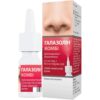
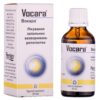



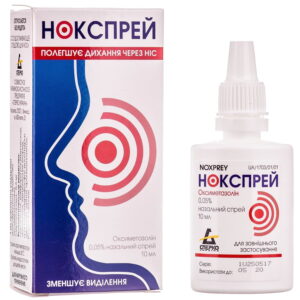
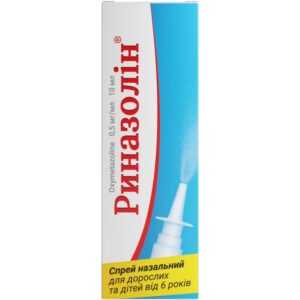
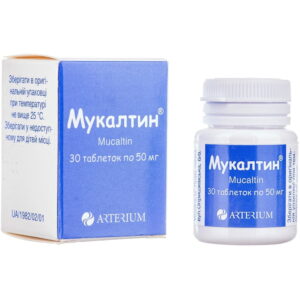
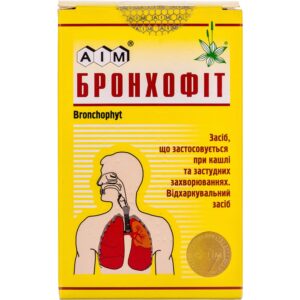
Reviews
There are no reviews yet.